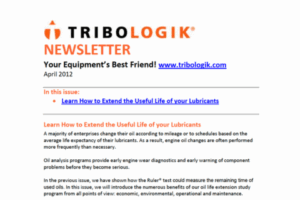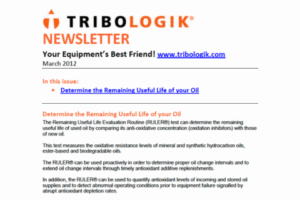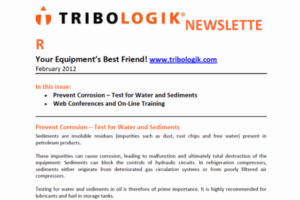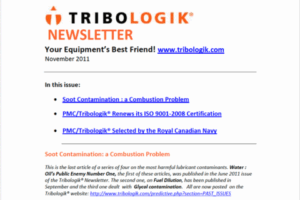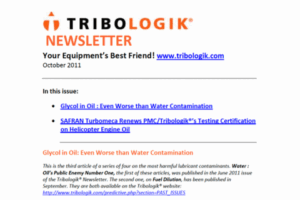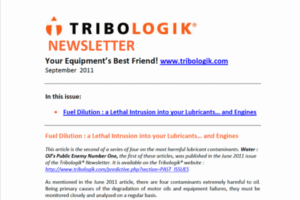A majority of enterprises change their oil according to mileage or to schedules based on the average life expectancy of their lubricants. As a result, engine oil changes are often...
Canadian Standards Association recently published a new standard, CSA Z-151, entitled “Concrete Pumps and Placing Booms” in November, 2009.
The Remaining Useful Life Evaluation Routine (RULER®) test can determine the remaining useful life of used oil by comparing its anti-oxidative concentration (oxidation inhibitors) with those of new oil. This...
Industrial Inspection & Analysis further improves on its expansive measurement services with the addition of new precision laser tracker technology.
Sediments are insoluble residues (impurities such as dust, rust chips and free water) present in petroleum products. These impurities can cause corrosion, leading to malfunction and ultimately total destruction of...
In our last issue, we discussed why and how important a proper sampling procedure was in order to obtain accurate oil test results. Here are a few tips to help...
The very first step of oil analysis doesn’t take place at the laboratory. It takes place at your plant or maintenance facility from the moment you extract the oil sample...
Soot is composed of a number of chemical components resulting from incomplete fuel combustion (gasoline, diesel, bunker, kerosene). It is present in the form of dark, carbon-rich tar-like solid substances...
Coolants, like lubricants, are essential fluids in order to maintain engines and all heat generating mechanical systems in good working order. Glycol is the main ingredient of coolants for diesel,...
As mentioned in the June 2011 article, there are four contaminants extremely harmful to oil. Being primary causes of the degradation of motor oils and equipment failures, they must be...

